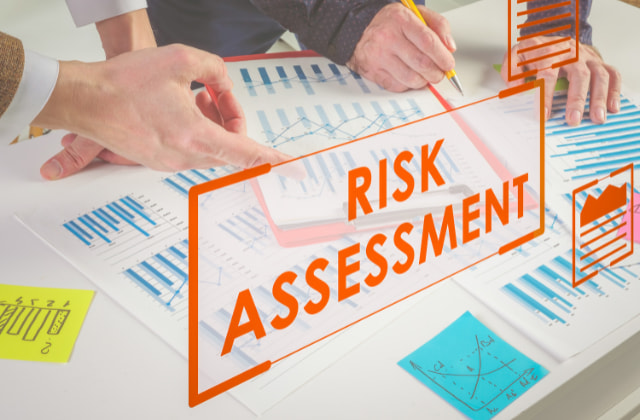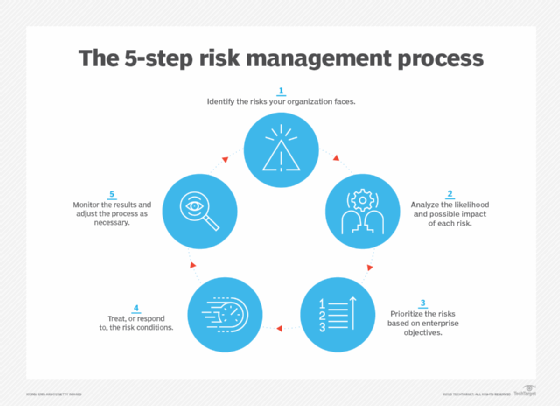A Detailed Guide to Understanding the Importance of Risk Management
A Detailed Guide to Understanding the Importance of Risk Management
Blog Article
Discovering the Value of Risk Management for Effective Decision-Making Approaches
In the elaborate globe of business, Risk Management arises as a vital element in the decision-making procedure. The capacity to recognize prospective threats and chances, and plan appropriately, can mean the difference in between success and failing.
Comprehending the Principle of Risk Management
Risk Management, a critical element in decision-making, is often misunderstood or oversimplified. Usually, it refers to the recognition, evaluation, and prioritization of threats to minimize, monitor, and control the likelihood or influence of unfavorable occasions. However, it's not simply regarding preventing unfavorable end results, however likewise concerning identifying prospective chances. Risk Management includes disciplined and organized strategies, using information and informative analyses. It calls for a thorough understanding of the organization's context, objectives, and the potential threats that could thwart them. From economic uncertainties, legal responsibilities, tactical Management errors, to mishaps and all-natural disasters, it attends to numerous dangers. Notably, effective Risk Management is not stagnant; it's a constant, progressive procedure that evolves with transforming scenarios.
The Function of Risk Management in Decision-Making Processes
In the world of critical planning and service procedures, Risk Management plays an indispensable role in decision-making processes. Risk Management thus becomes a crucial tool in decision-making, assisting leaders to make enlightened selections based on an extensive understanding of the dangers involved. Risk Management serves as an important component in the decision-making processes of any type of company.

Exactly How Risk Management Improves Strategic Planning
In the context of strategic preparation, Risk Management plays a critical role. Starting with the recognition of prospective risks, it additionally expands to the application of Risk mitigation procedures. The function of Risk Management is dynamic but not fixed, as it requires constant monitoring and adjusting of approaches.
Identifying Potential Dangers

Applying Risk Reduction
Having actually established the significance of identifying potential threats, the following action is to explore Risk reduction. This process entails developing and executing methods click now to manage recognized dangers efficiently. It is a crucial aspect of tactical planning as it improves decision-making by lessening possible negative results. Risk reduction strategies can vary from Risk evasion, Risk transfer, to take the chance of reduction. Each strategy must be customized to the specific Risk, considering its potential effect and the organization's Risk tolerance. Efficient Risk reduction requires a deep understanding of the Risk landscape and the possible effect of each Risk. This understanding makes it possible for companies to prioritize dangers and allot sources properly, making certain that one of the most considerable dangers are resolved first.
Surveillance and Adjusting Strategies
Though Risk mitigation is an important action in tactical preparation, continuous surveillance and change of these techniques is just as crucial. This continuous procedure enables companies to identify new threats and reassess existing ones, making certain the carried out methods continue to be efficient in the ever-changing business environment. It also offers an opportunity to review the success of the Risk Management measures, permitting modifications to be made where necessary, further boosting critical preparation. Effective monitoring and change require the usage of analytics and essential performance indications (KPIs) to gauge efficiency. These devices provide useful data-driven understandings that can notify tactical decision-making. Therefore, tracking and changing Risk Management methods is a crucial element for boosting an organization's resilience and tactical preparation.
Case Studies: Successful Risk Management and Decision-Making
In the globe of organization and finance, successful Risk Management and decision-making typically offer as the pillars official site of prosperous ventures. These instances highlight the worth of astute Risk Management in decision-making procedures. These instances underscore the crucial function of Risk Management in critical decision-making.
Devices and Strategies for Efficient Risk Management
Browsing the intricate maze of Risk Management calls for the appropriate collection of devices and techniques. These tools, such as Risk registers and heat maps, aid in recognizing and assessing possible threats. Techniques consist of both measurable techniques, like sensitivity evaluation, and qualitative methods, such as SWOT evaluation. These assistance in prioritizing threats based upon their potential effect and likelihood. Risk feedback methods, a crucial part of Risk Management, include accepting, avoiding, moving, or mitigating threats. Tracking and regulating threats, through normal audits and reviews, make certain that the techniques remain efficient. With these devices and strategies, decision-makers can navigate the complex landscape of Risk Management, therefore promoting educated and effective decision-making.
Future Fads in Risk Management and Decision-Making Strategies
As we discover the large landscape of Risk Management, it ends up being obvious that the strategies and tools utilized today will proceed to advance. The principle of Risk society, where every member of a click here for more company is conscious and entailed in Risk Management, will certainly obtain much more prestige. These patterns proclaim a more proactive and inclusive strategy in the direction of Risk Management and decision-making.
Final thought

Risk Management hence comes to be a crucial tool in decision-making, assisting leaders to make enlightened choices based on a thorough understanding of the risks included. Risk reduction strategies can range from Risk evasion, Risk transfer, to run the risk of decrease (importance of risk management). Efficient Risk reduction calls for a deep understanding of the Risk landscape and the prospective influence of each Risk. Risk action approaches, an essential element of Risk Management, involve accepting, staying clear of, transferring, or mitigating threats. The principle of Risk culture, where every member of an organization is mindful and involved in Risk Management, will gain extra prominence
Report this page